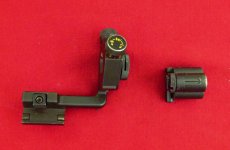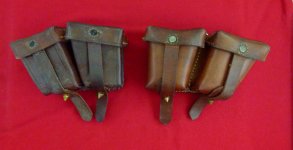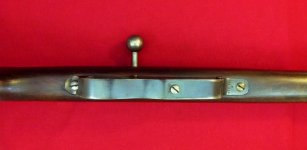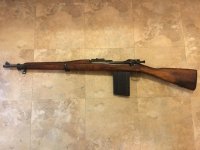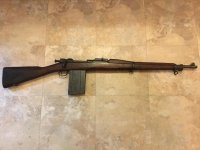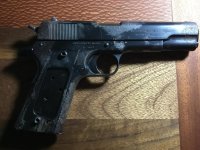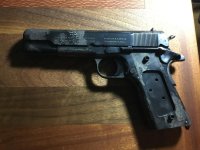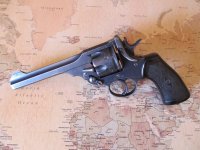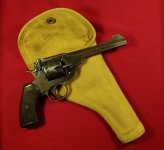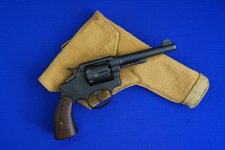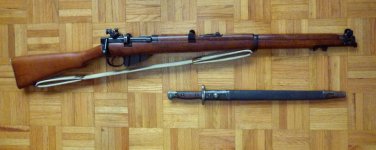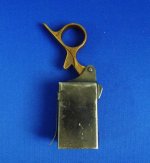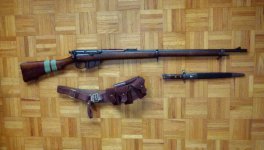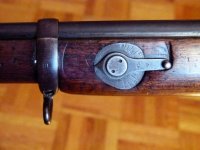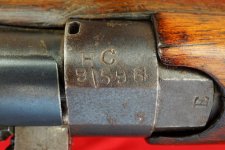LVSteve
Member
Switzerland was not a combatant in either World War, but they were ready to defend their country if necessary. Their service rifle in WW II was the K 31 in the 7.5 X 55 caliber, a little shorter and a little fatter than our 30-06. Here is their K 31 rifle, also a picture with the straight-pull action partly open. The cartridges came in a unique card and metal stripper; the magazine held six rounds. Also shown is a front sight adjuster, possibly the most complex gadget for this one could imagine, and a cartridge belt.
I have one fitted with a scope. Crazy accurate.


